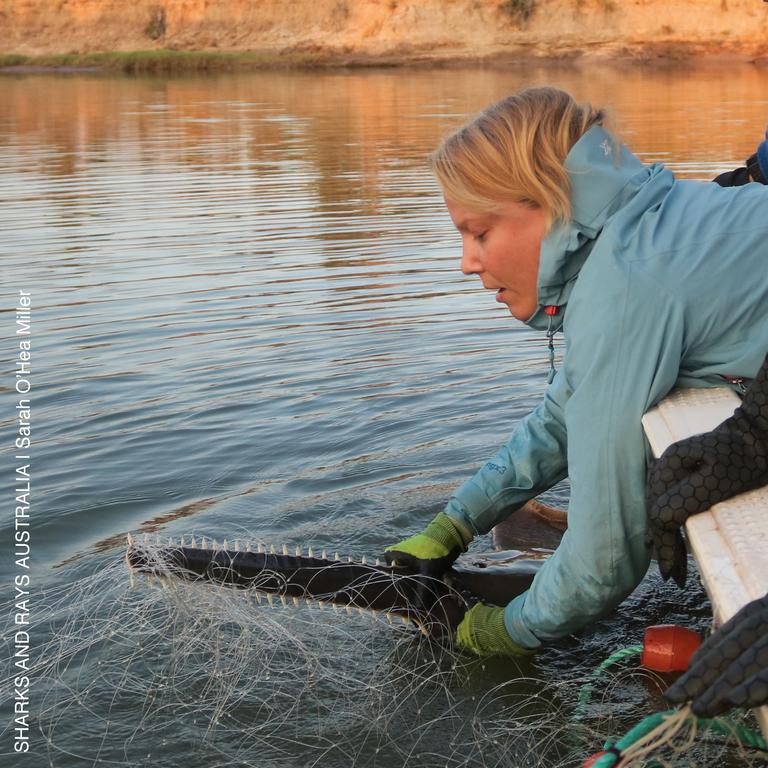National Sawfish Sighting Week: How the NT’s boaties and fishos can help scientists save species
Citizen scientists across the country’s north will spend the next week combing tropical waters for signs of the critically endangered sawfish, whose last bastion runs from the Kimberley to Cape York, taking in the NT along the way.

Citizen scientists across the country’s north will spend the next week combing the tropical waters for signs of the critically endangered sawfish, whose last bastion runs from the Kimberley to Cape York Peninsula, taking in the Territory along the way.
A week after the conclusion of International Sawfish Day (October 17), Cairns-based not for profit research centre, Sharks and Rays Australia (SARA), is hosting National Sawfish Sighting Week.
Sawfish are apex predators important to an ecosystem’s balance and also hold significance for many First Nations people due to their snouts (rostrum), which have ceremonial and cultural functions, and as a food source.
Australia is home to some of the last significant populations globally of four species of sawfish – the freshwater, narrow, dwarf, and green sawfish – but, according to SARA founder and chief scientist, Dr Barbara Wueringer, they have almost been wiped out in southern waters and face enormous pressures in the north.

“Forty years ago, sawfish were regularly spotted in Australia’s tropical and subtropical waters, as far south as Sydney Harbour,” Dr Wueringer said.
“Today, the sharklike rays, easily distinguished by their saw-like snouts which can extend up to two metres (about the length of a queen-size bed), are rarely seen outside the Gulf of Carpentaria, Northern Territory and the Kimberley.”
“For four out of five sawfish species, north Australian waters may contain their last populations, and we can’t let them quietly disappear.”
Dr Wueringer said the fifth species, the smalltooth sawfish, clings on mainly off the coast of Florida, but the one-two punch of cyclones Helena and Milton has left them dying from a bizarre spinning disease, where they float to the surface and spin in circles until they expire.
Last year, the influential International Union for Conservation of Nature (IUCN) reclassified all sawfish to critically endangered.

“With sawfish habitats disappearing globally, we’re in a race against time to find out where these magnificent creatures still exist, and in what numbers,” Dr Wueringer said.
Enter your contribution to the species’ survival – participation in the inaugural National Sawfish Sighting Week, which aims to swell the already 1500 reported sightings logged in the country’s north with SARA since 2017.
Participants are asked to register with SARA online and nominate a day and scouting method: boating, fishing (if caught as bycatch – don’t target them), flying a drone, or walking the shoreline, etc.
They are asked to also record absences: knowing where few sawfish seem to congregate is just as important as knowing the hotspots.
Sawfish are most active in the early morning and late afternoon, typically inhabiting shallow coastal waters, estuaries, rivers and creeks, and are fond of mudflats and mangroves.
Participants go in the draw to win a variety of prizes.
First prize is a spot on SARAs two-week sawfish expedition in Far North Queensland next year.
National Sawfish Sighting Week runs until November 2.
Register online at saw.fish/sawfish-week/





